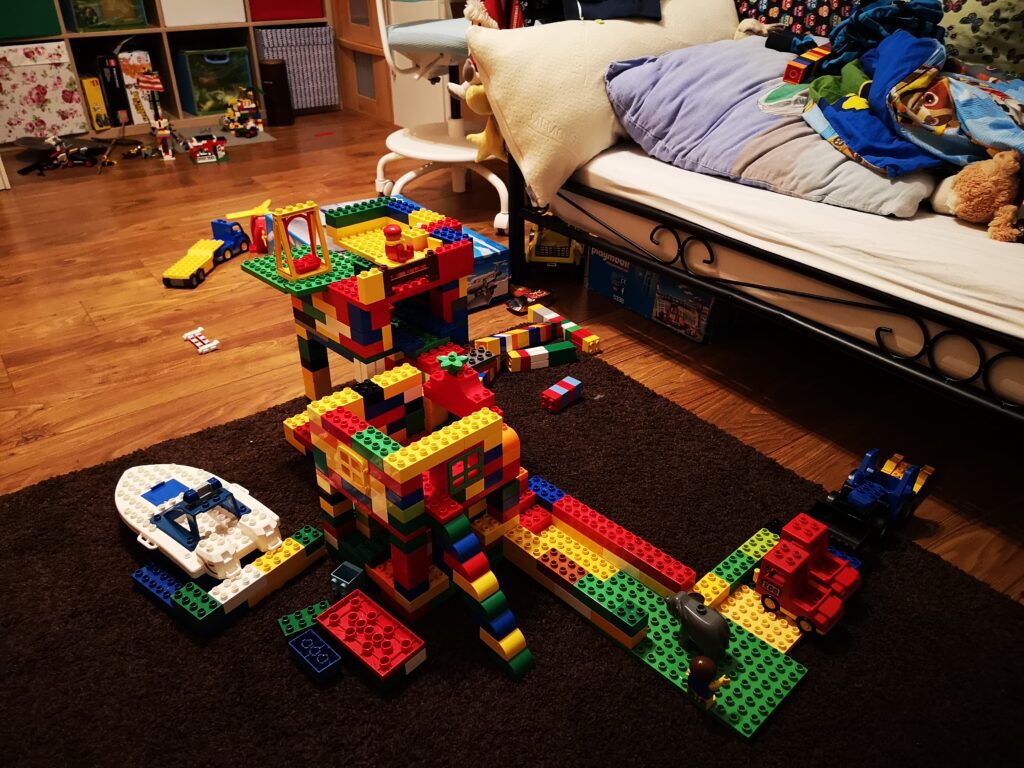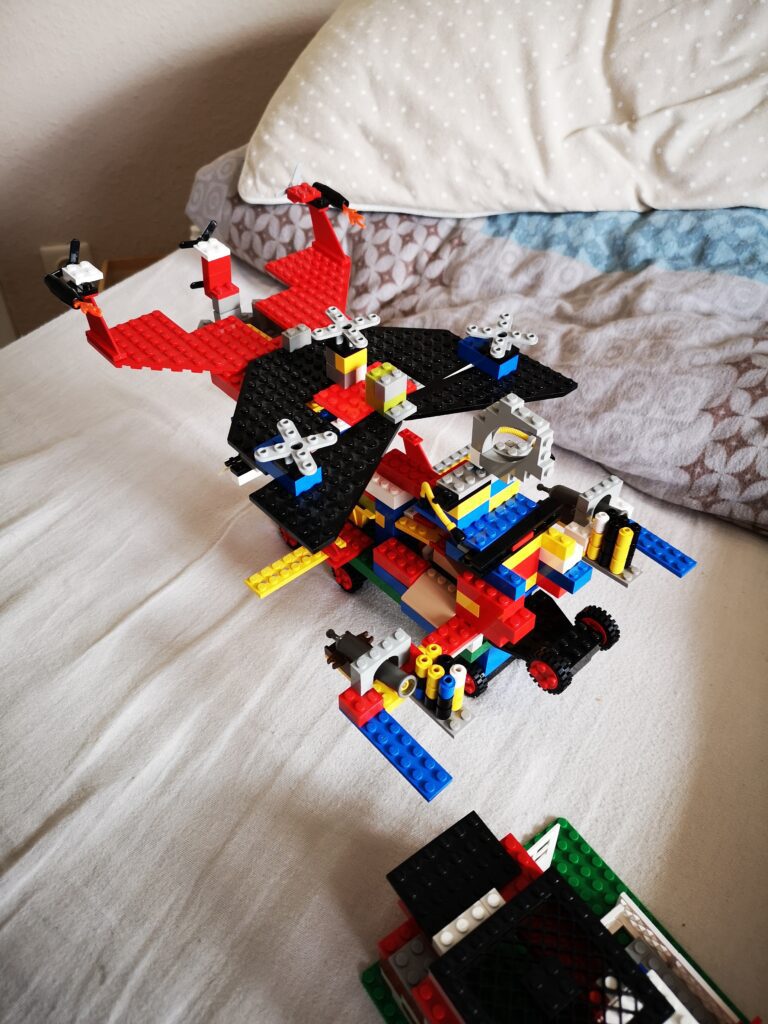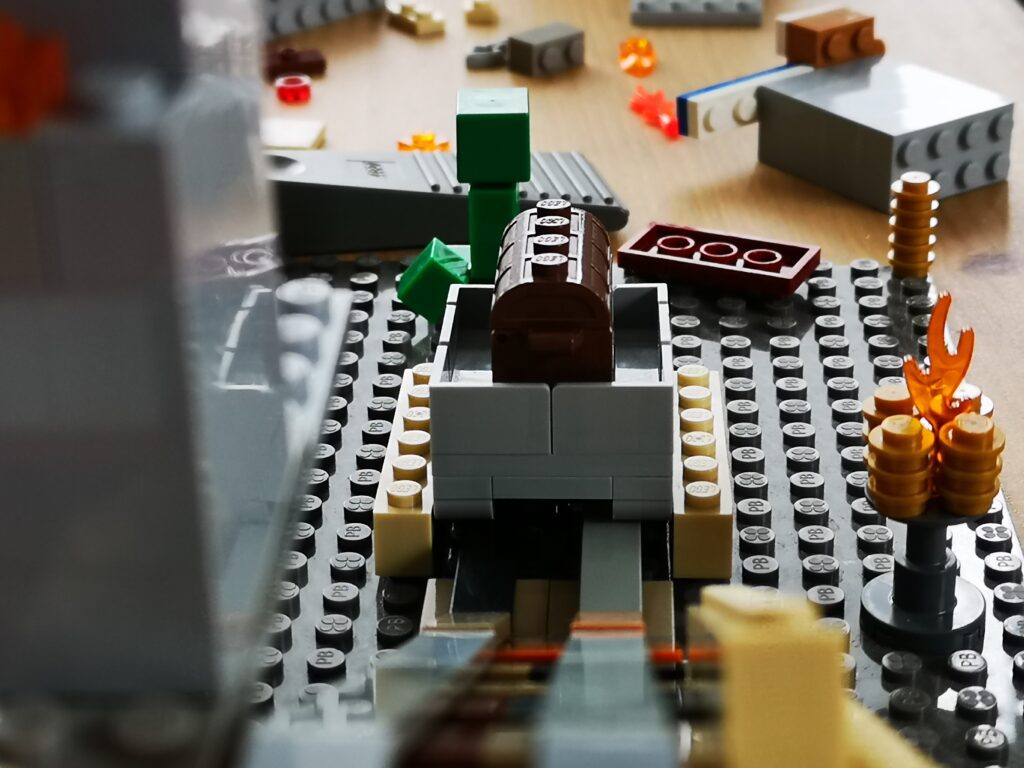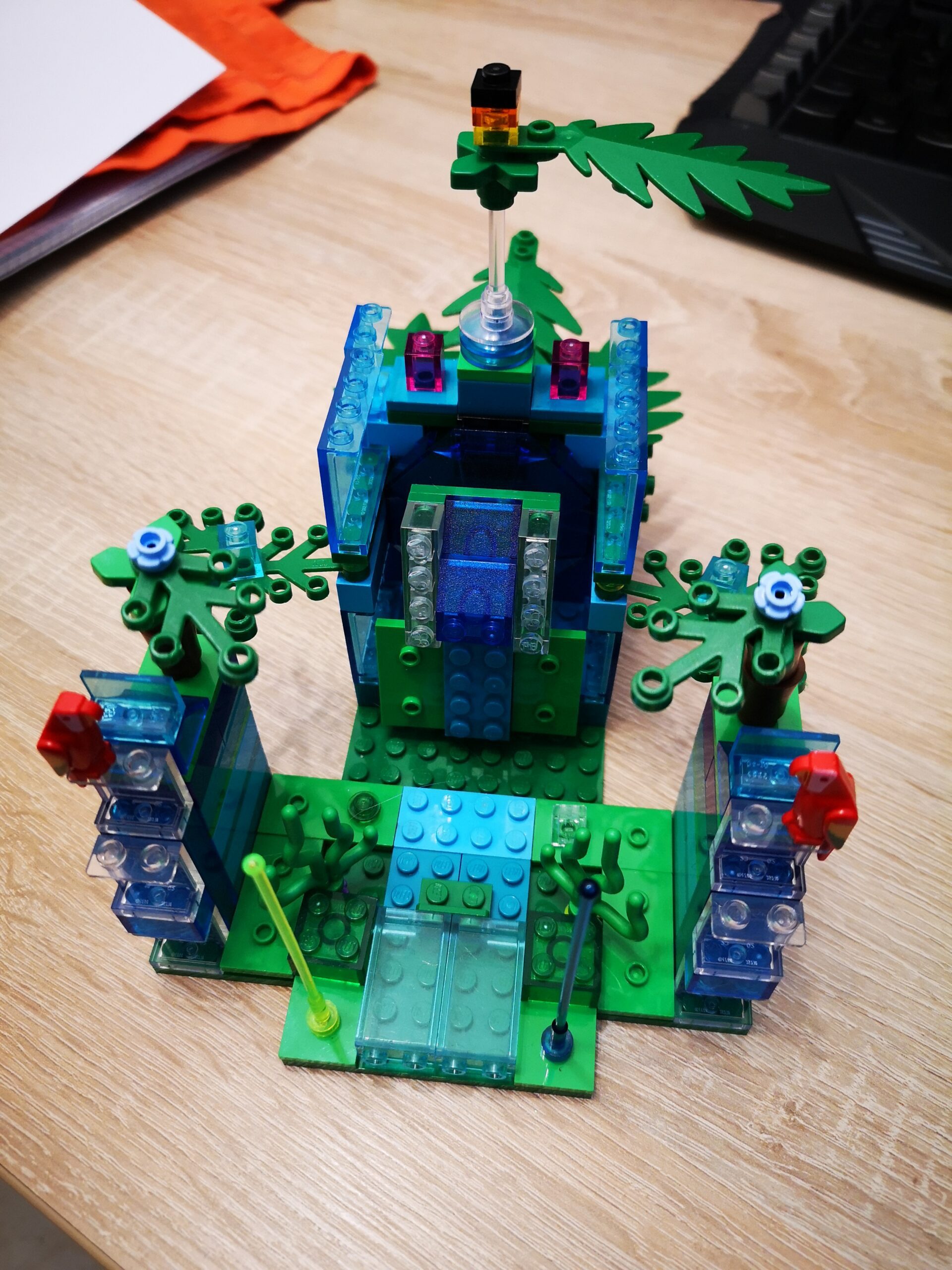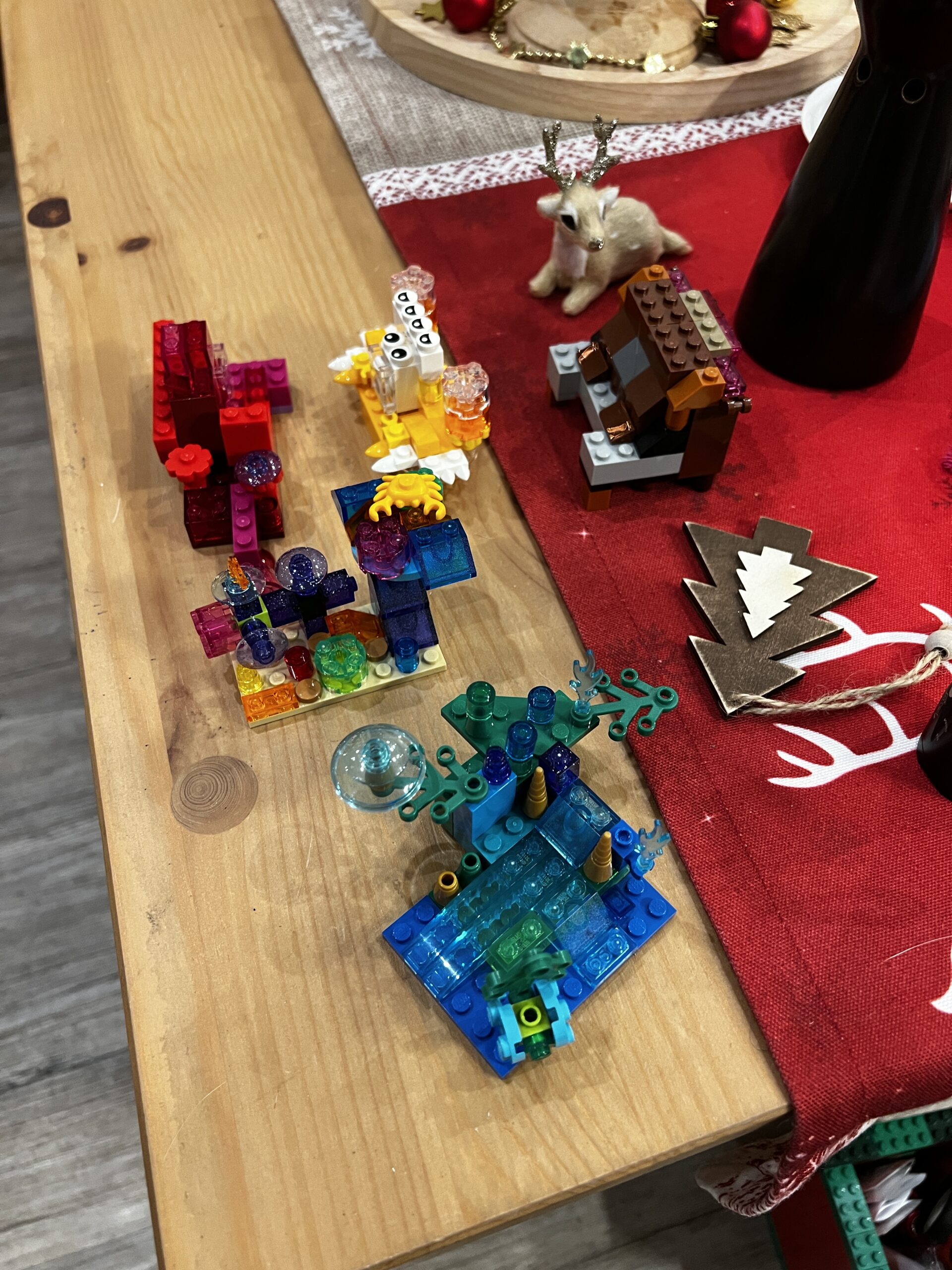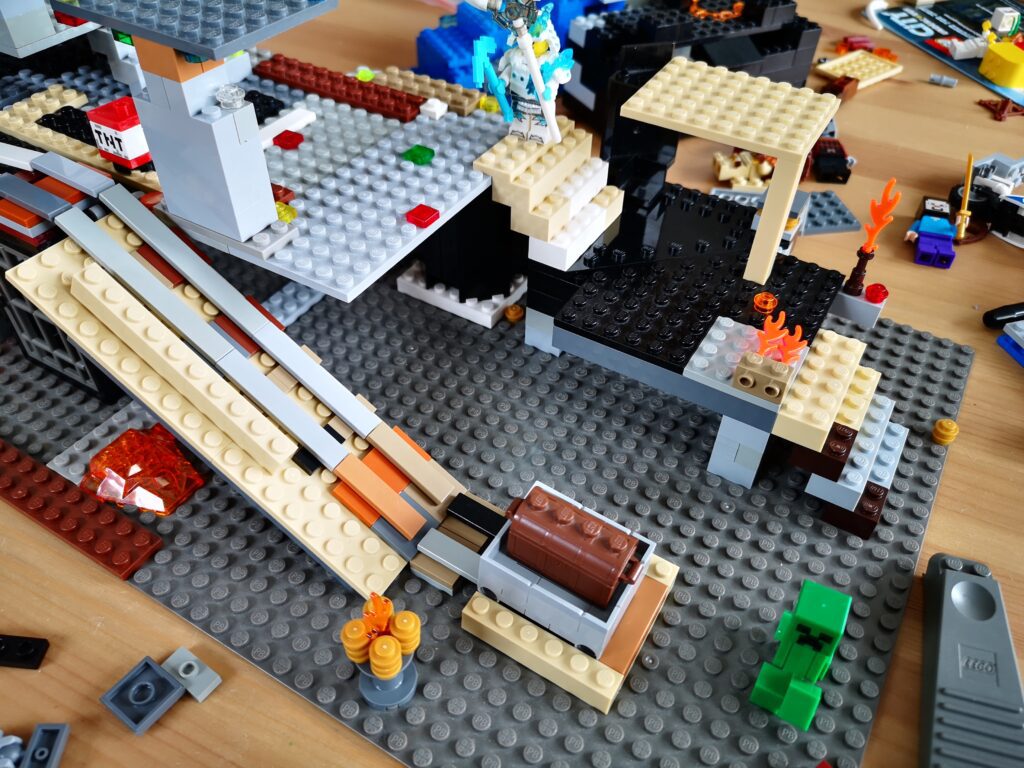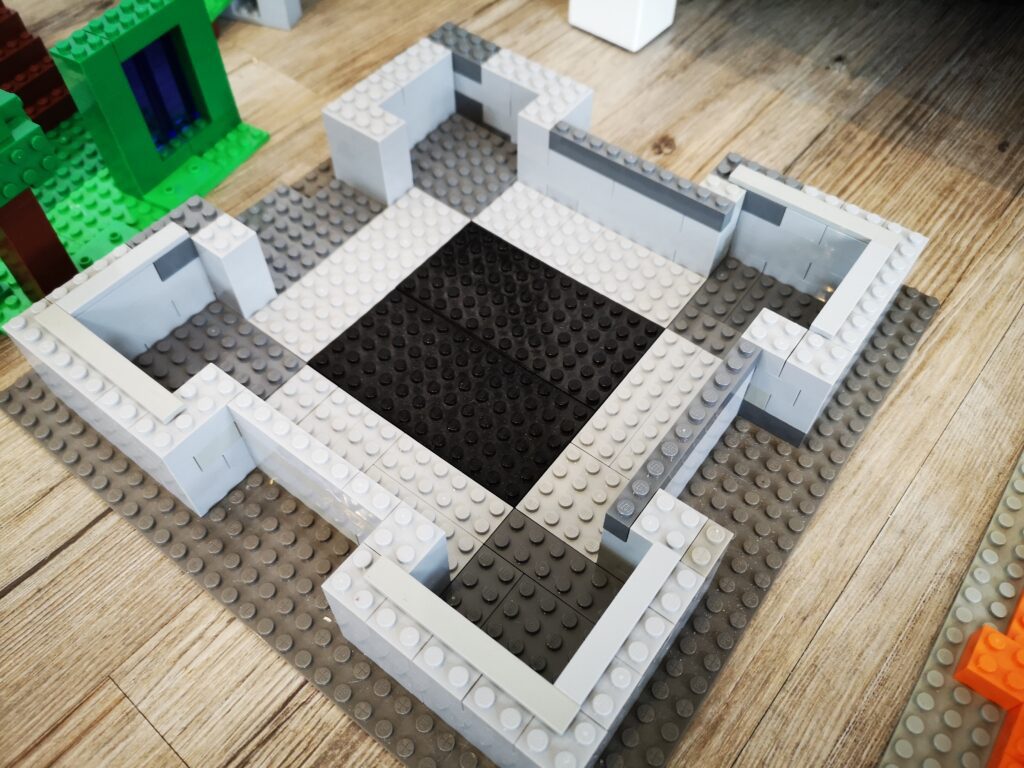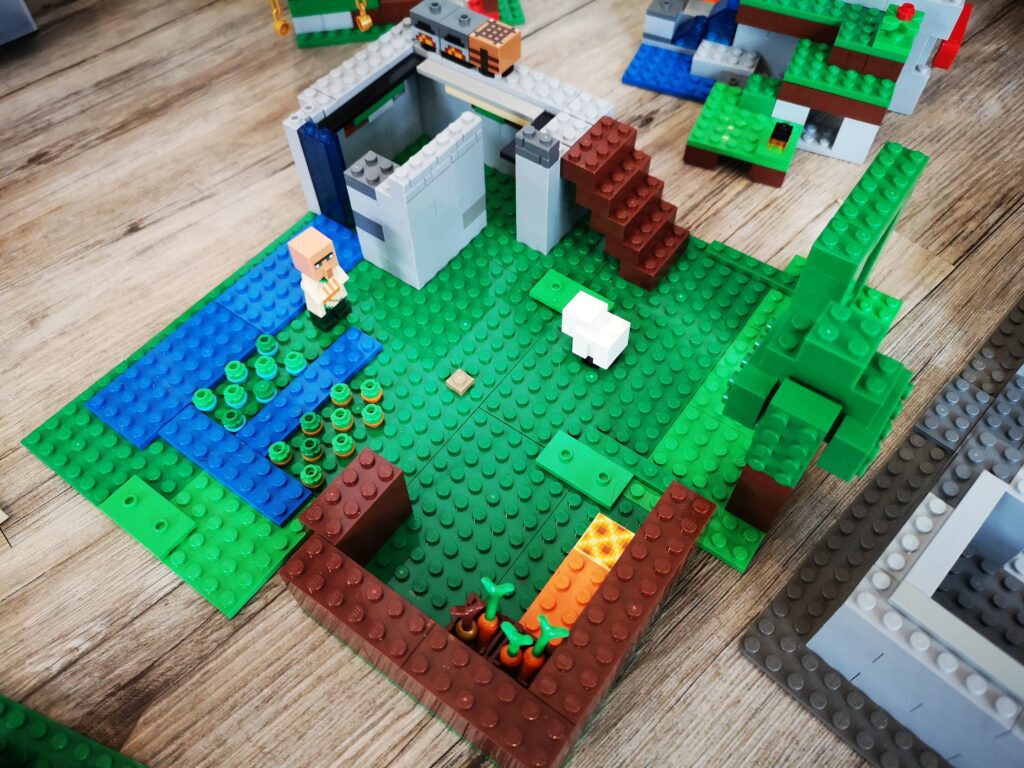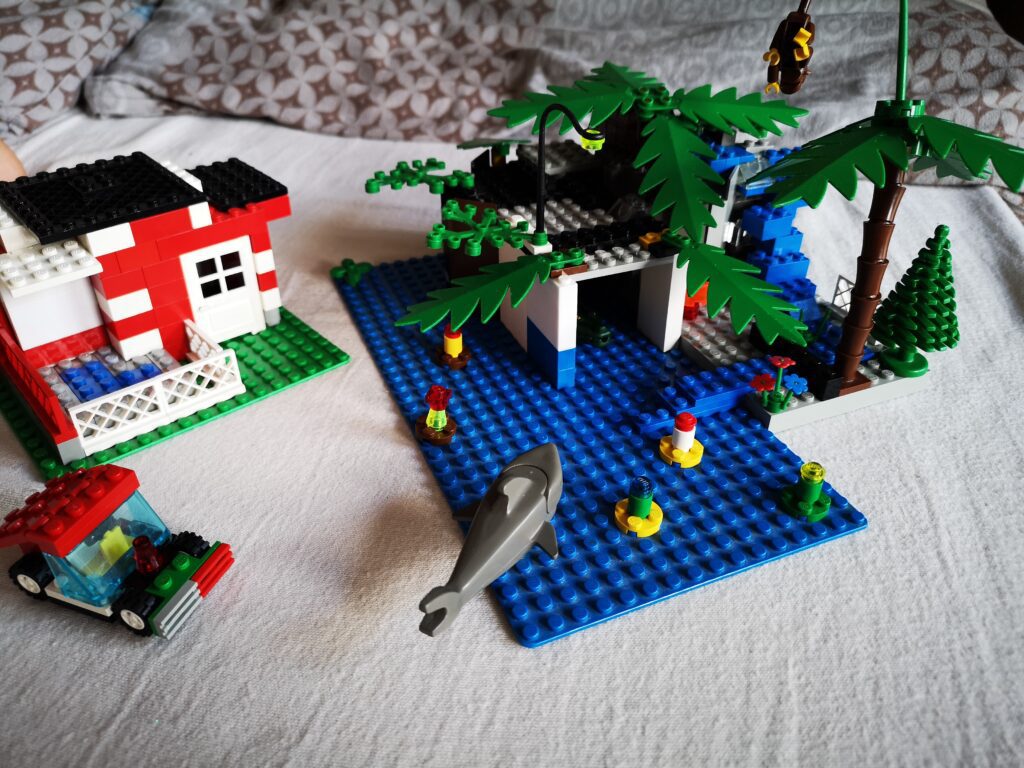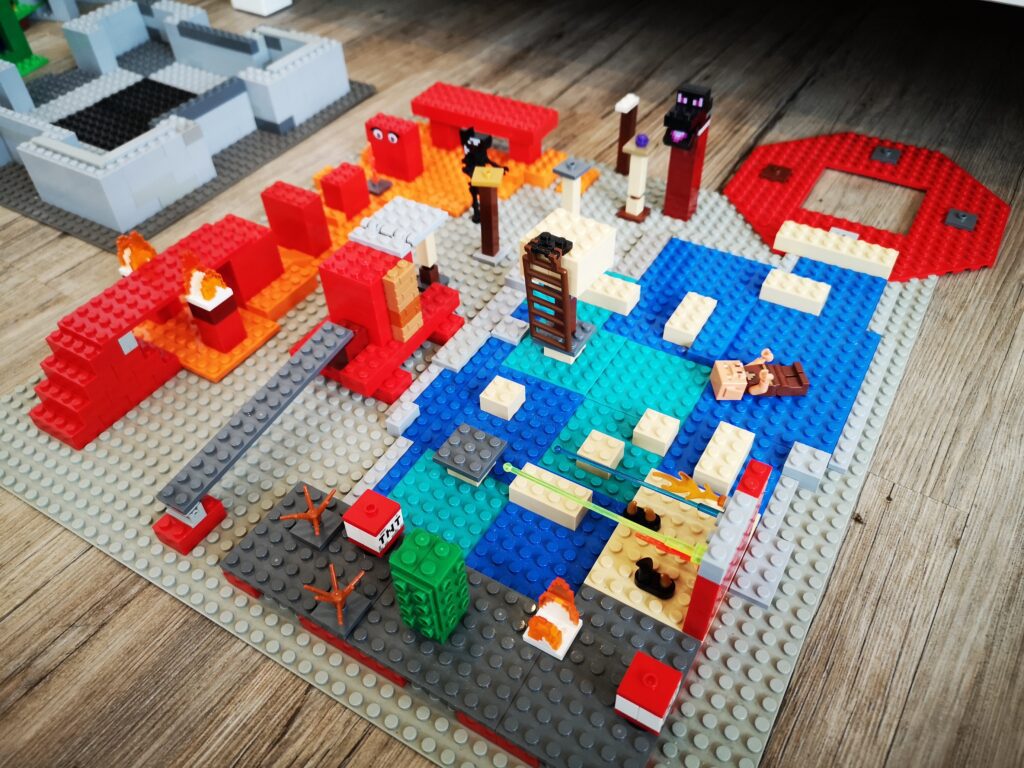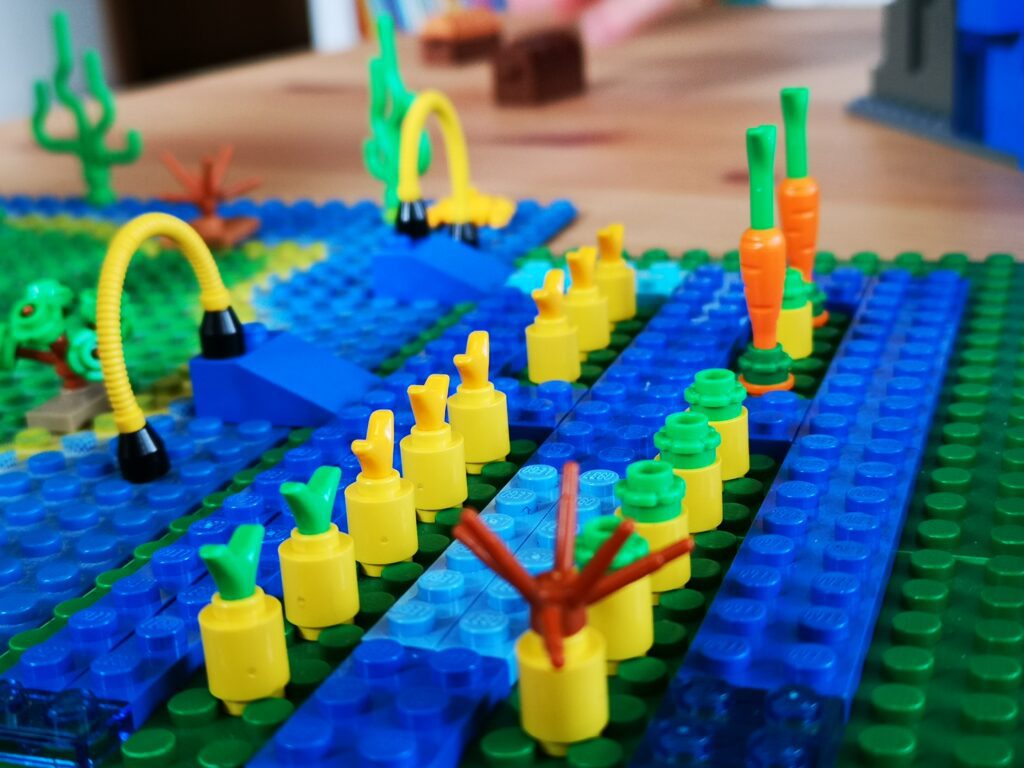Building with LEGO
How the fascination with LEGO started
If, like me, you’ve ever wondered what LEGO stands for (it’s short for leg godt, meaning “play well” in Danish), you’ll realize how perfectly the name fits. As a child, I wasn’t particularly fascinated by LEGO—we had just two sets at home: a big basic set shaped like a giant LEGO brick and a Robin Hood-themed set that actually belonged to my uncle. They sat in the attic, waiting to be played with, but rarely captured my interest.
My son, however, is completely different. We started with LEGO Duplo, perfect for small hands, but our creations were never small—Duplo structures often turned into towering builds, sometimes even combined with wooden railway tracks. Around the age of six, he transitioned to regular LEGO bricks, quickly recognizing their endless possibilities. Duplo became an occasional fallback, but the smaller bricks became his true passion.
Unlike me, he has an innate talent for building. I was never particularly skilled with LEGO, but my partner is the opposite, inspiring our son with creative constructions. By the time he was six or seven, he was already building more impressive models than I ever could. While I may never match his skills, I still enjoy experimenting and improving my own LEGO abilities alongside him.
Thinking outside the box - A lesson from our children
I’ve realized over the years that adults (myself included) often limit themselves by sticking too rigidly to how things should look. Perfectionism can quickly turn creativity into frustration—when our creation doesn’t match the image in our heads, we feel like we’ve failed instead of simply enjoying the process.
A perfect example: While I spend ages adjusting tiny details on a simple structure, my son has already built three different spaceships, each with its own unique functions. He doesn’t get stuck trying to make things look a certain way—he just builds, experiments, and improves along the way.

Children have an incredible ability to stay flexible. They may have a vision, but they’re open to change, adapting their approach when something doesn’t work. Unlike adults, who often obsess over making things just right, kids simply take things apart, rebuild, and tweak their designs without overthinking. The goal isn’t perfection—it’s fun, creativity, and the joy of bringing ideas to life.
Watching my son build reminds me how much we can learn from children. Sometimes, the best creations come from letting go of rigid expectations and simply enjoying the process.
Basic or special stones?
Basic stones* already offer considerable creative potential, that’s for sure. However, the addition of a variety of bricks, significantly expands possibilities and stimulates creativity. Having a diverse range of bricks at hand allows for more detailed building and more complex models. In my experience (which might differ from yours of course!), once you and your children want to build more elaborate constructs, relying on basic stones alone may become limiting.
Transparent bricks, for example, can create completely new visual effects and add depth to a building project. Here they have been used to build a jungle temple and a few smaller decorative pieces, but of course there are no limits to your and your kids’ imagination.
LEGO vs. no-name alternatives
While LEGO can be expensive, investing in the original product is often worth it for several reasons:
Durability & Color Retention: Even decades-old LEGO bricks maintain their strength and vibrant colors, unlike cheaper alternatives that may fade or become brittle over time.
Secure Connections: LEGO bricks fit together precisely, ensuring stability and preventing frustrating loose connections.
Strict Safety Standards: LEGO adheres to rigorous safety regulations, using non-toxic materials and rounded edges, making it safe for all ages—something many knockoffs fail to guarantee.
Extensive Set Variety: From movie franchises to video games and original themes, LEGO offers a vast selection that appeals to both kids and adult collectors.
High Resale Value: Thanks to LEGO’s reputation for quality and durability, original sets retain their value and often resell for much more than generic alternatives.
Reliable Customer Support & Warranty: LEGO provides excellent global support and warranties, ensuring replacements for defective pieces—something budget brands rarely offer.
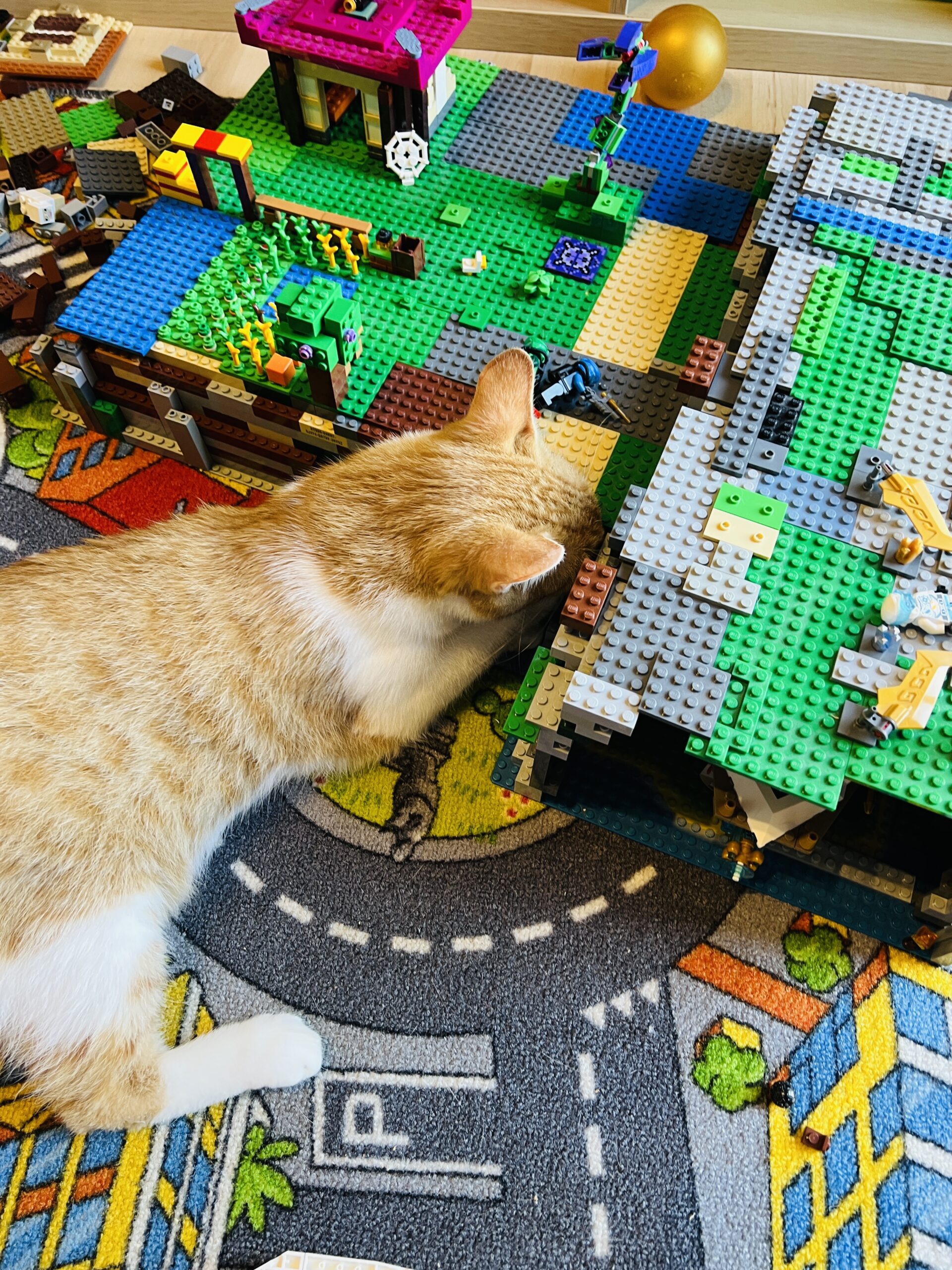
Where to start if you plan to get LEGO for your kids?
Acquiring second-hand LEGO is a fantastic option if you have the opportunity. The durability of these bricks ensures that they typically remain in excellent condition. You just might have to clean them – for instance in the washing machine – if they have spent a lot of time in a box on someones’s attic. In order to clean your LEGO, put the bricks inside a pillowcase and a simple washing machine cycle should do the trick. This makes second-hand LEGO a cost-effective and environmentally friendly choice.
While it might prove difficult to find sellers, since many people hold onto LEGO for potential future generations, exploring online platforms, flea markets, second-hand stores, or asking friends if they know somebody who knows somebody… can potentially be successful.
Smart ways to save money on LEGO
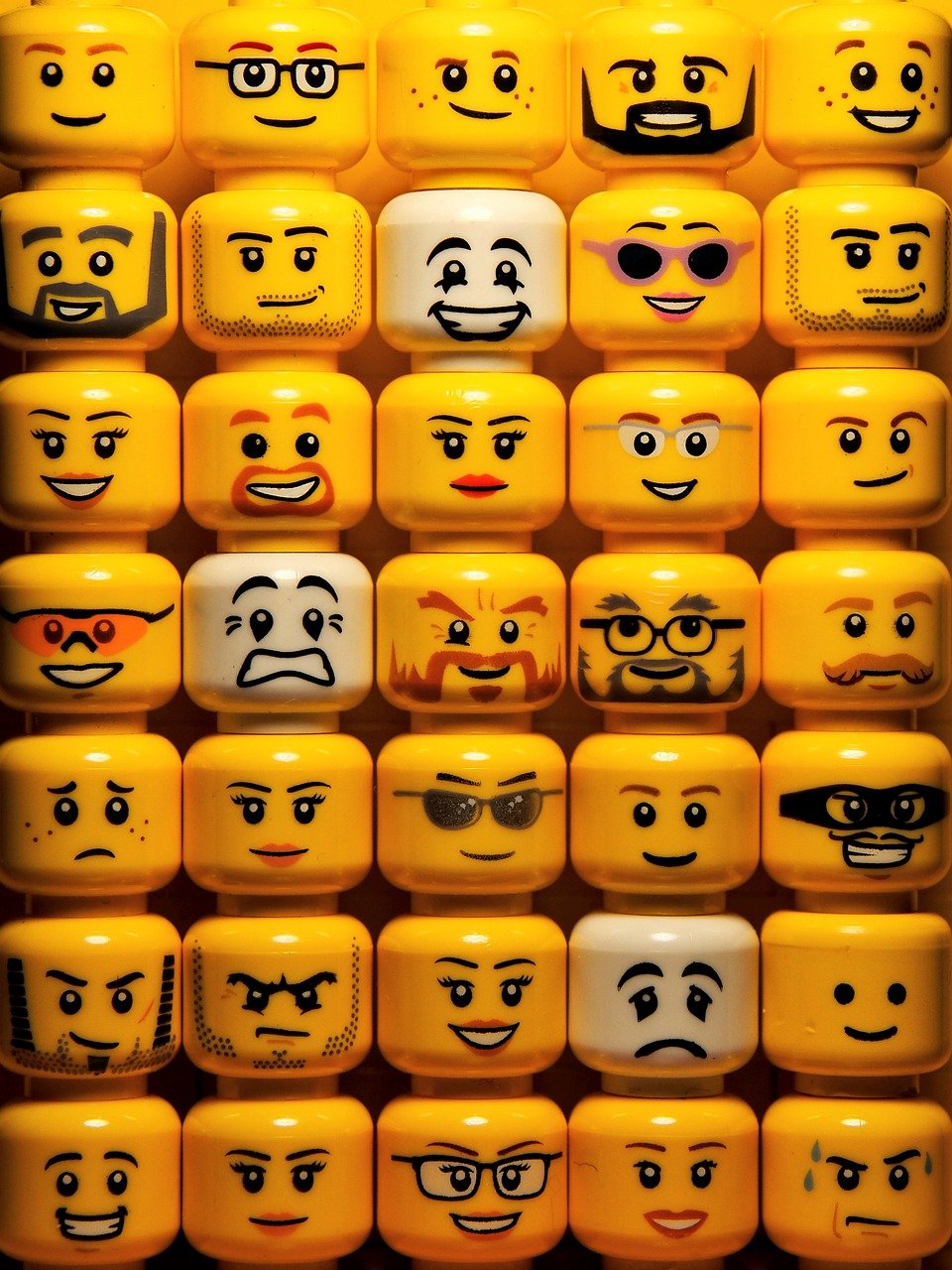
Start with Basic Brick Sets: Beginner-friendly sets with simple bricks are often more affordable and just as enjoyable.
Look for Sales & Promotions: Keep an eye on flash sales, holiday discounts, and special events like Black Friday for reduced prices on LEGO sets.
Buy Open-Box or Pre-Owned Sets: Consider gently used or open-box LEGO sets from online marketplaces, auction sites, or local LEGO enthusiast groups—these can be significantly cheaper.
Compare Prices Across Retailers: Before purchasing, check multiple stores for the best deals, exclusive promotions, or retailer-specific discounts.
Take Advantage of Bundles & Combos: Some retailers offer LEGO set bundles or combo deals at a lower price per set, making it a cost-effective way to expand your collection.
Plan for Gift Opportunities: Since LEGO can be pricey, consider adding new sets to birthday or Christmas wish lists. Pooling resources with family members can also help share costs.
Wait for Clearance Sales: Retailers often discount older sets at the end of a season or promotional period to make room for new inventory—perfect for grabbing a bargain.
Choose Budget-Friendly Sets & Themes: If you’re on a tight budget, focus on smaller sets or explore more affordable LEGO themes to continue building without overspending.
Be warned, though: LEGO can be highly addictive! You might soon find yourself shopping for new sets—not just for your kids, but because you want to build bigger, more creative structures yourself. 😉
Our favorite LEGO sets
LEGO Pirate Ship 3-in-1
On my son’s wishlist for 2021 was – unsurprisingly – more LEGO because honestly you can never have too many bricks. I get that 
Still, with its 1260 pieces and the creative possibilities, we found it to be a worthwhile investment. Obviously you cannot assemble all three builds simultaneously with the included bricks. Luckily, the set provides all the necessary instructions, allowing you to recreate each build at least similar to the original, if you have enough bricks to play around with.

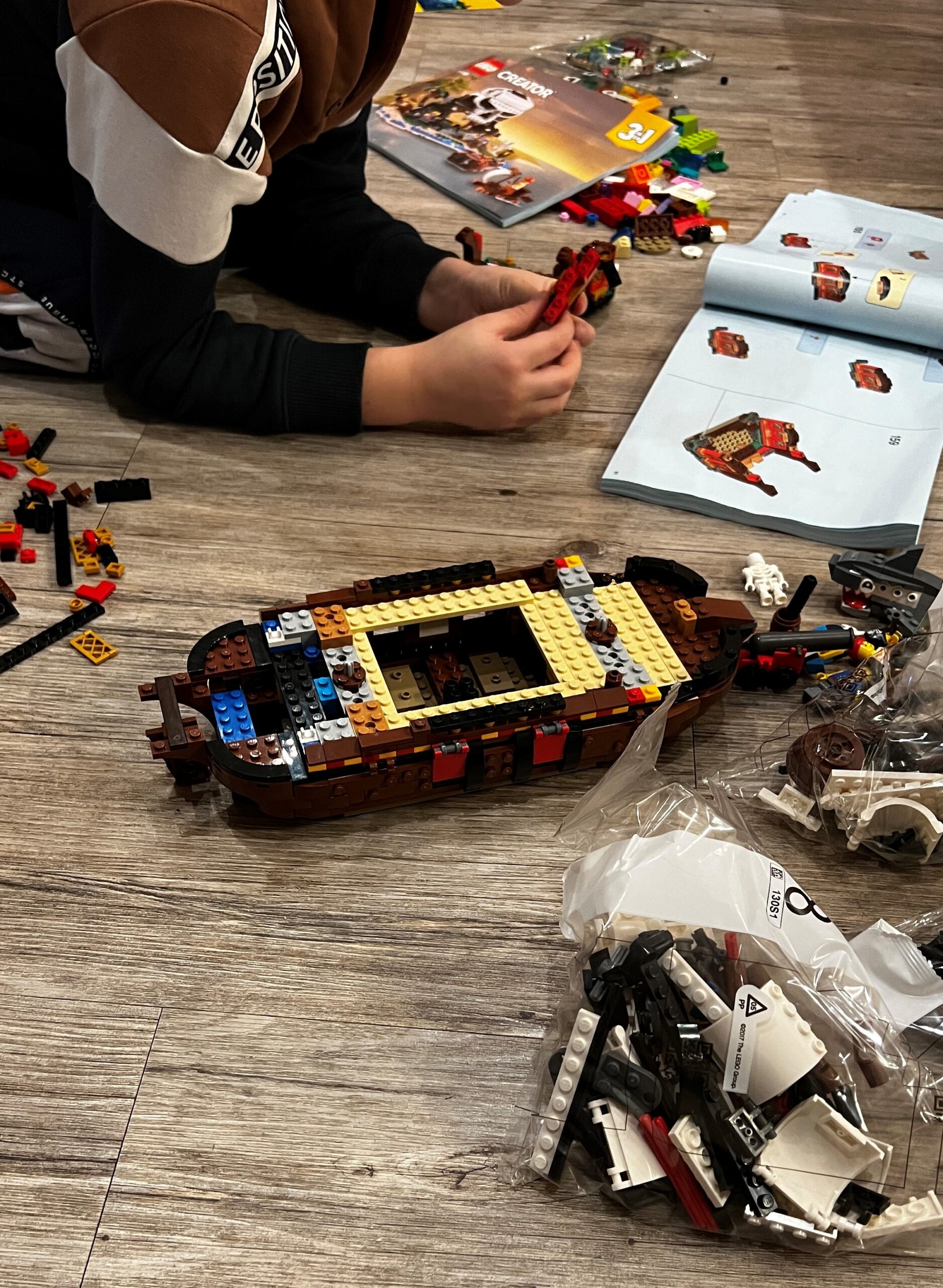
After all, with LEGO, the possibilities are as boundless as your imagination, and that’s what makes it truly special. By the way: this is what the LEGO 3-in-1 Pirate Ship* looked like after 4 hours of focused building. There were breaks for dinner and a Christmas movie on Christmas Eve. No help from our side was needed and my son finished it only a few minutes before midnight. That’s how much he enjoyed building it.
LEGO Minecraft: Creeper Mine
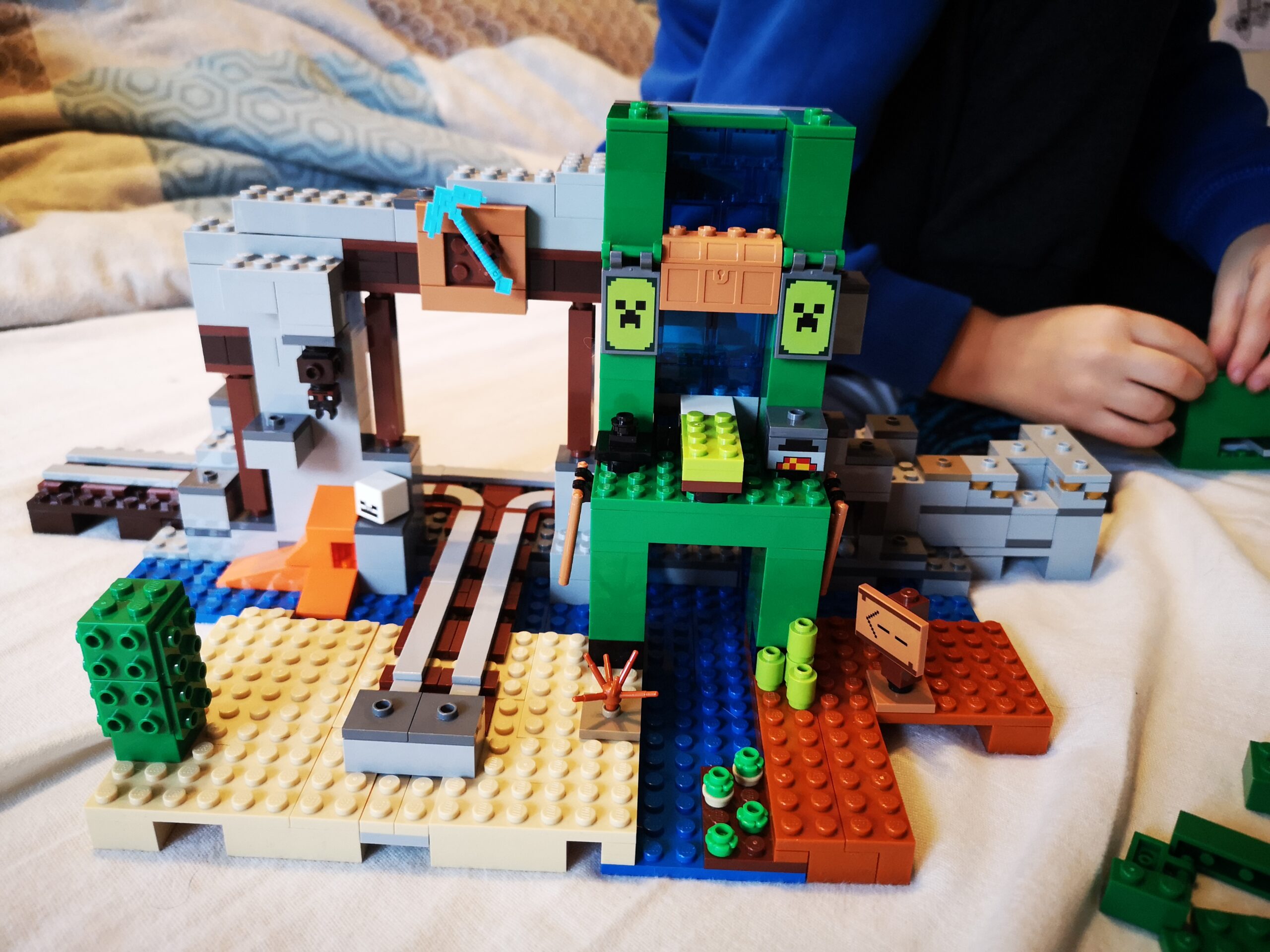
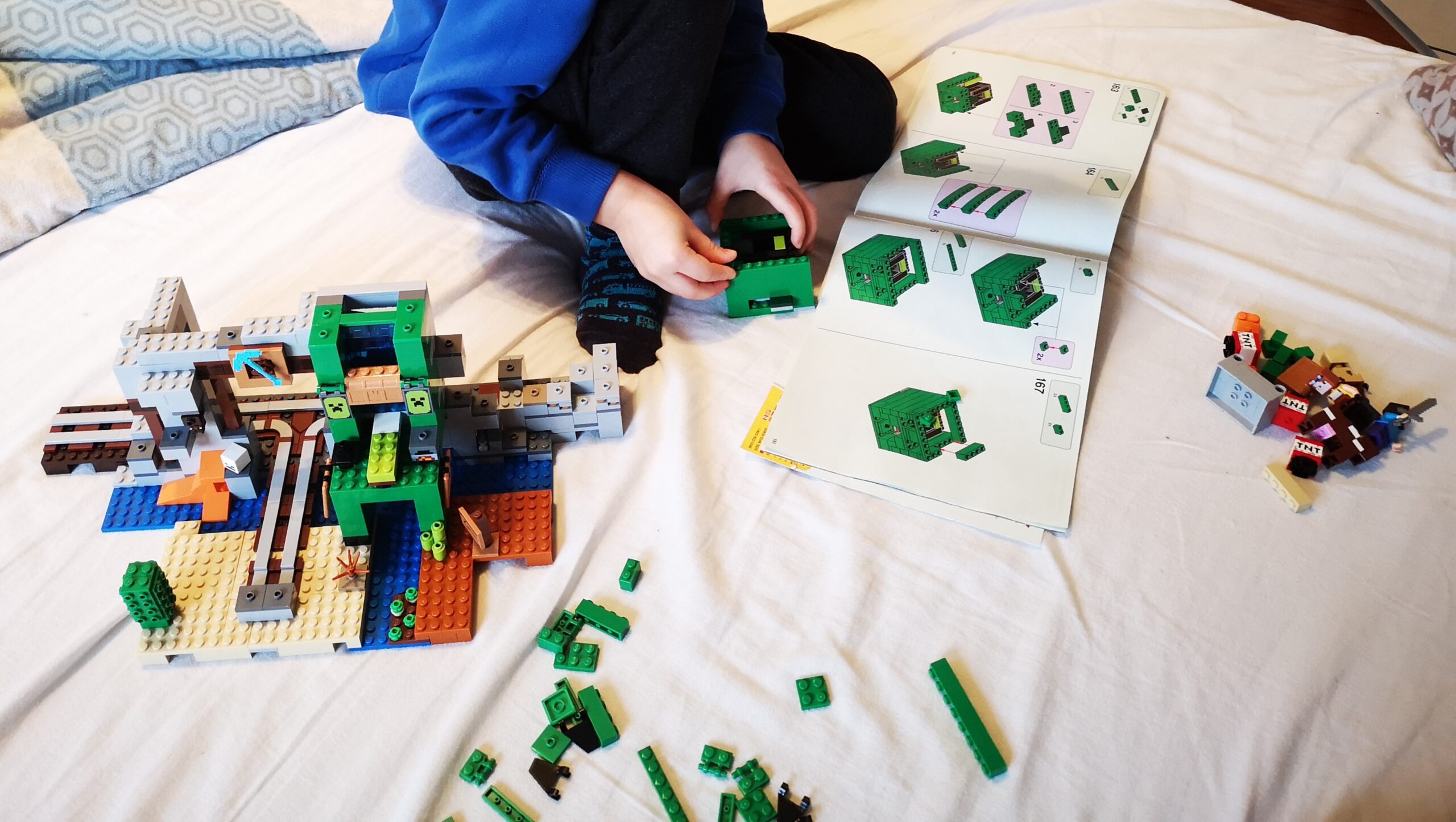
Although Minecraft was one of the games I really couldn’t get into for a very long time, my son was eventually able to convince me to start playing Minecraft with him on the Xbox. I admit the start was a bit bumpy and it took a long time for Minecraft and I to warm up to each other, but now I can understand the enthusiasm to a certain extent.
Obviously, it didn’t take long before LEGO Minecraft ended up on my wish list – and naturally, Mother Christmas delivered.
The very first set we purchased was the LEGO Creeper Mine*, followed quite quickly by sets 2 and 3 (The Training Grounds* & The First Adventure*).
The sets are really well thought out and even the ‘standard version’ is a lot of fun to play with because the children already know the setting (in most cases) from the video game. The sets can then either be built and played with according to the instructions, supplemented with further sets, expanded with existing bricks or simply used creatively for their very own ideas.
More ideas
Inspired by Portal Knights / Minecraft
Once we had a few sets together and I had made friends with Minecraft (if it weren’t for those annoying witches with their potions and unpleasant laughter), we started to get really creative. As mentioned above, we were often inspired by Minecraft – simply put, we tried to creatively realise what we saw in the video game in our own way and build our own version of it with Lego. These were often mine shafts, tree houses, villages, caves, etc.
LEGO sets such as The Creeper Mine, or The Crafting Box* have inspired us to build for hours and hours straight and we would always come up with new and entirely different ways in which the bricks could be rearranged and combined, in order to create new stories and adventures.
Later on, we discovered a videogame called Portal Knights* (Xbox Version) which has brought an entirely new dimension to our building experience as it offered a unique source of inspiration. Eventually, we started translating in-game elements into tangible LEGO constructions, which allowed us to recreate and expand the stories and experiences from Portal Knights with LEGO.
The great (and probably bad) thing about LEGO is that there are sets for so many themes, films, series, games and so on. From LEGO technic to LEGO fortnite, LEGO star wars, LEGO city, LEGO friends, LEGO Harry Potter, there is hardly anything that doesn’t exist and there’s something for everyone. Of course LEGO wants to earn money with the sheer endless amounts of sets that exist by now. Children see the sets and recognise their favourite film heroes in them or can make a connection to their favourite games. Naturally, this awakens the desire – at least in many children who have perhaps already come into contact with LEGO – to have this and other sets. But is that really such a terrible thing? As we have already established, building with LEGO opens up a whole host of creative possibilities. Even if a set like this sits unused and gets boring for a while after you’ve built it, you can always take it apart and use it for new projects. Lost building instructions can always be found online, so you don’t have to worry about not being able to rebuild such a set.
More ideas for building with LEGO
Creative Bridge-Building: A fun homeschooling project
During the homeschooling period of Covid-19, children had the opportunity to tackle various creative projects. First and foremost, a big thank you to all the teachers who went above and beyond to educate and support their students despite the challenges—especially in primary school, where it was anything but easy at times.
One project stands out in my memory because my son was absolutely thrilled about it: building a bridge using different materials and testing its stability.
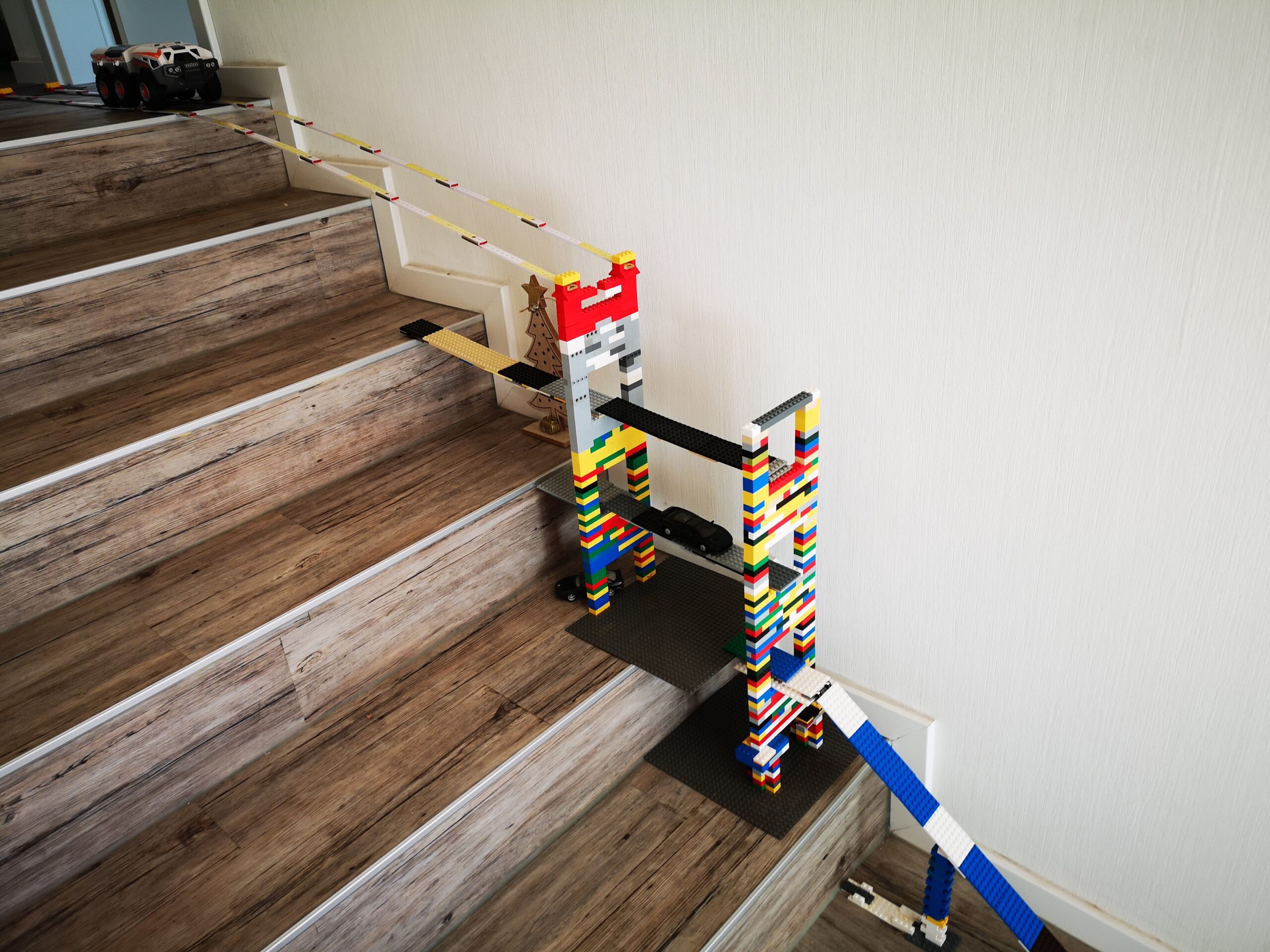
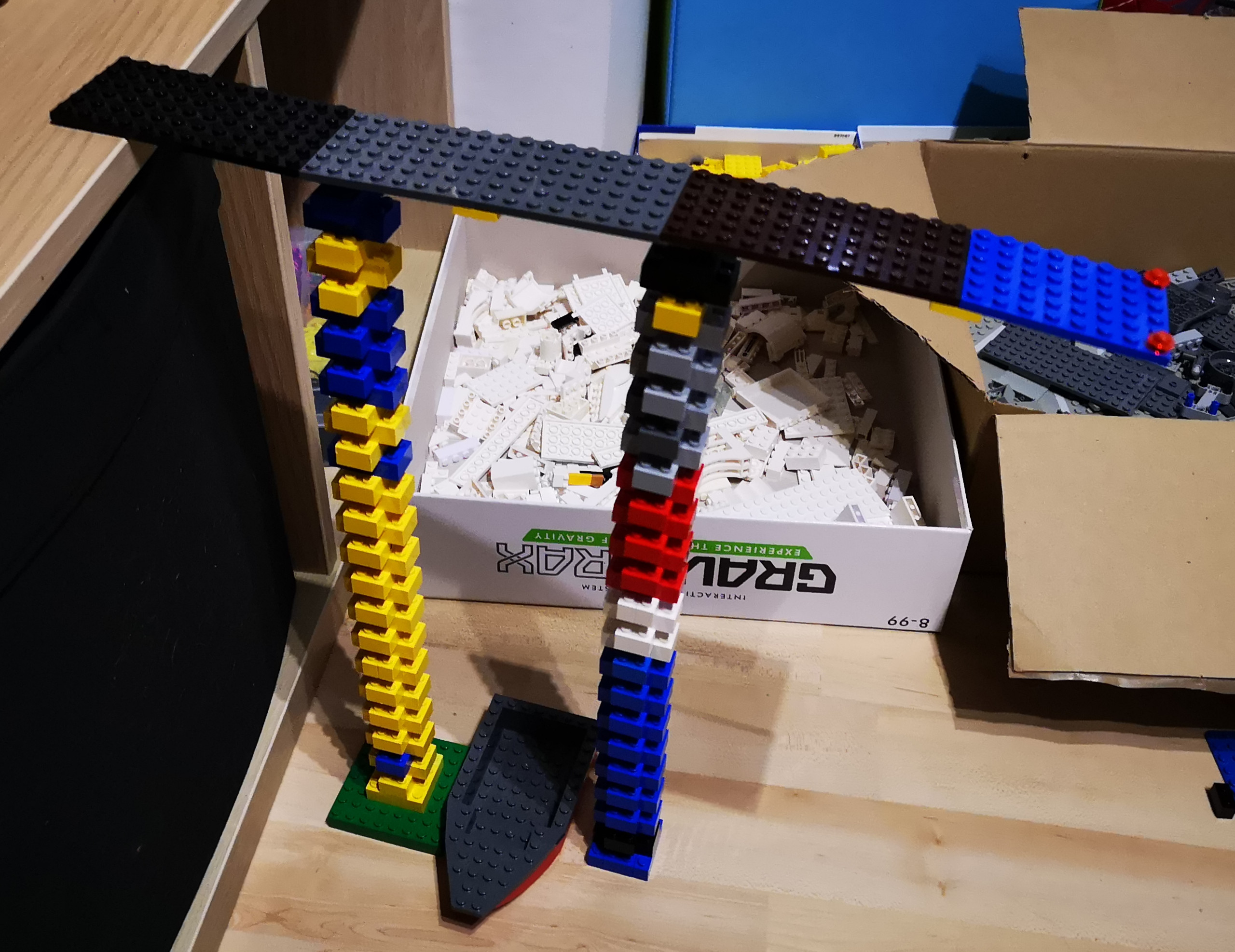
Version 1: LEGO Bricks
For his first attempt, he primarily used basic LEGO bricks. Initially, stabilizing the pillars proved tricky, and he experimented with different methods—some more successful than others. Eventually, he figured out a way to make it work. To reinforce the structure, he added two folding rulers, some cardboard, and tape. Once complete, we celebrated the bridge’s grand opening for our Matchbox cars. Unfortunately, the large amphibious vehicle had to be turned away—it would have crushed the bridge instantly! 😆
Version 2: Folded Paper & Coins
The second version was made from folded paper, with the goal of holding as many coins as possible. To our surprise, the structure was impressively strong—we counted over 80 coins, and it could have supported even more!
Version 3: Geomags & Magnetic Balance
For the final version, he used Geomags, a set of magnets and colorful shapes. If the weight was evenly distributed, the magnets could support a surprising amount—though, by this stage, the project had turned more into an experimental free-build session than a school assignment. 😅
All in all, it was a fun and educational experience, teaching us a lot about materials and stability. Most importantly, it brought some much-needed joy to the homeschooling period.

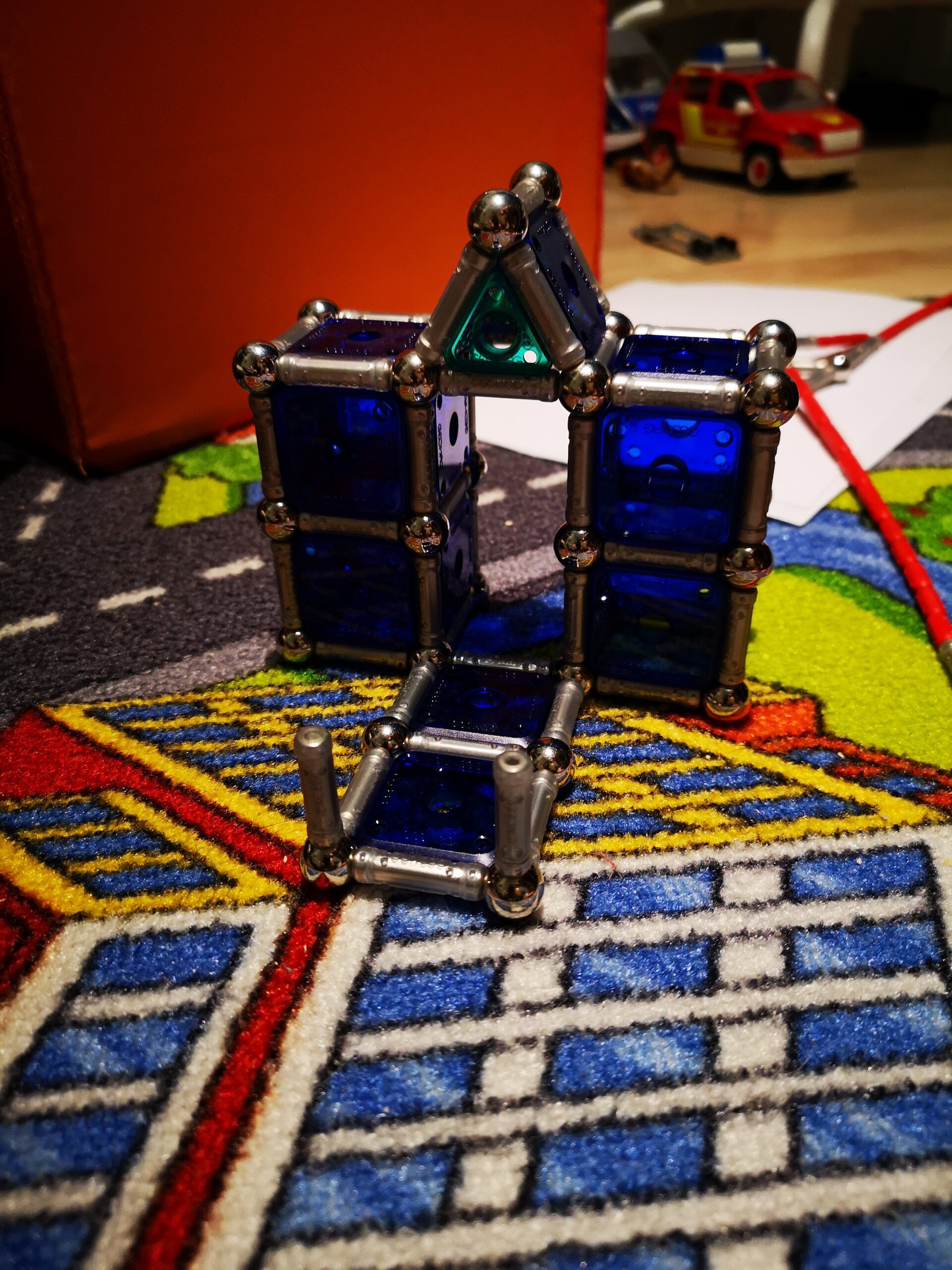
More content
When the weather isn’t so nice or we’re having a particularly lazy day, puzzles are one of our absolute favorites. Let’s be honest: it’s great fun to jump in puddles and dance in the rain, but there are also those unpleasant, wet and cold days when you just want to hide away where it’s warm and cozy.
On those days, puzzles are the ultimate activity. Why? Find out here
Hopscotch is a game that I’m sure many of you know from your own childhood. Unfortunately, it’s often the simplest games that you lose sight of as you get older. Our children’s attention is naturally drawn to completely different games and activities these days than it was 5 or 10 years ago. What’s more, the range of games on offer is growing from day to day. Oddly enough, there is an overabundance of choice and at the same time kids are often bored. Especially when screen time is over. However, we are going to do something about this today, and for that, we’re using a real classic that never really got old…
* Disclaimer
I get a small commission for purchases made through links in this post. For you, this has no impact on the price but it helps me to keep doing what I love and allows me to produce more content.


